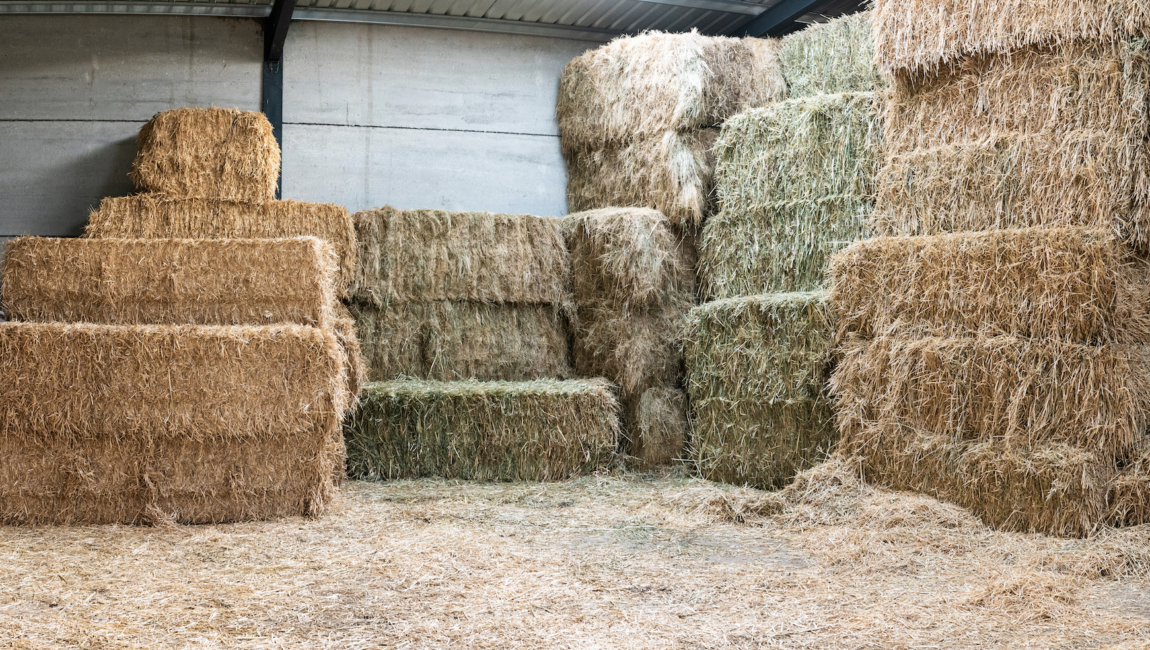
As we continue through summer, we know you’re looking ahead and planning for the fall and winter. When lush pastures aren’t as readily available in the upcoming colder months, look to this guide for nourishing your livestock with hay.
Types of Hay
Grass
Grass hay is often a good choice for all animals, as it is easier on the kidneys due to its lower protein content and is also easier to chew and digest. Grass hay is also a quality hay choice for “easy keepers,” meaning animals that easily gain weight or struggle to keep their weight down. Because of the high fiber content, grass hay is a convenient solution for these easy keepers, since it can satisfy an animal’s appetite without adding extra calories and protein.
Legumes
If you’re used to planting and harvesting crops each year, legumes may create the hay for you. Whether alfalfa, clover, lespedeza, birdsfoot trefoil, vetch, soybeans or cowpeas, these hay legumes are rich in digestible energy, vitamin A and calcium. Cutting these crops for hay before they reach full maturity captures the highest digestibility, palatability and nutrient values of the crop.
Cereal Grains
Using cereal grains for hay can be a great excuse to cut oats before the traditional harvest time. Cutting oats for hay should be done while the crop is still green and growing, rather than waiting for the seed heads to mature for grain. There can be a risk of nitrate poisoning associated with cereal grain hays, but nitrate content tests are readily available to ensure the hay is safe for consumption.
Hay Storage
The way you store hay can have a big impact on hay quantity and quality losses, so you may need to invest in additional resources such as labor and equipment. We recommend baling hay at 15 to 20 percent moisture (wet basis). If stored uncovered, use bales harvested early in the season first, and try to sell or feed all bales before the following spring. If stored outside, place bales on a well-drained surface, such as gravel, old tires or pallets, rather than directly on the ground. Investing in tarps or storage buildings will help preserve your hay.
